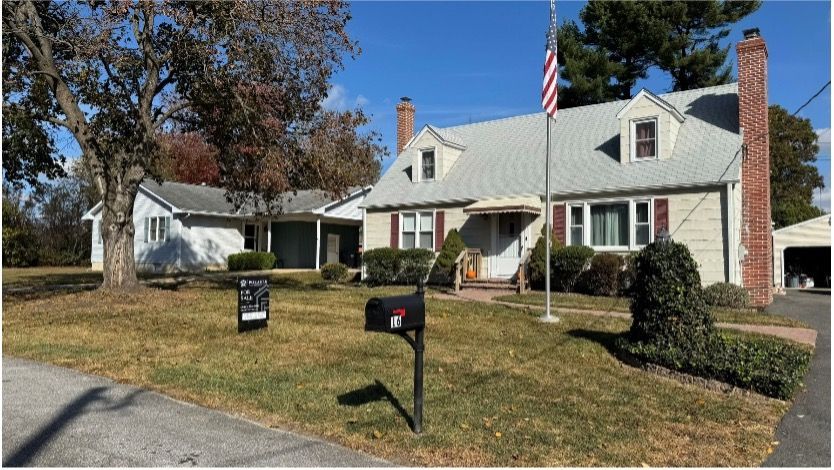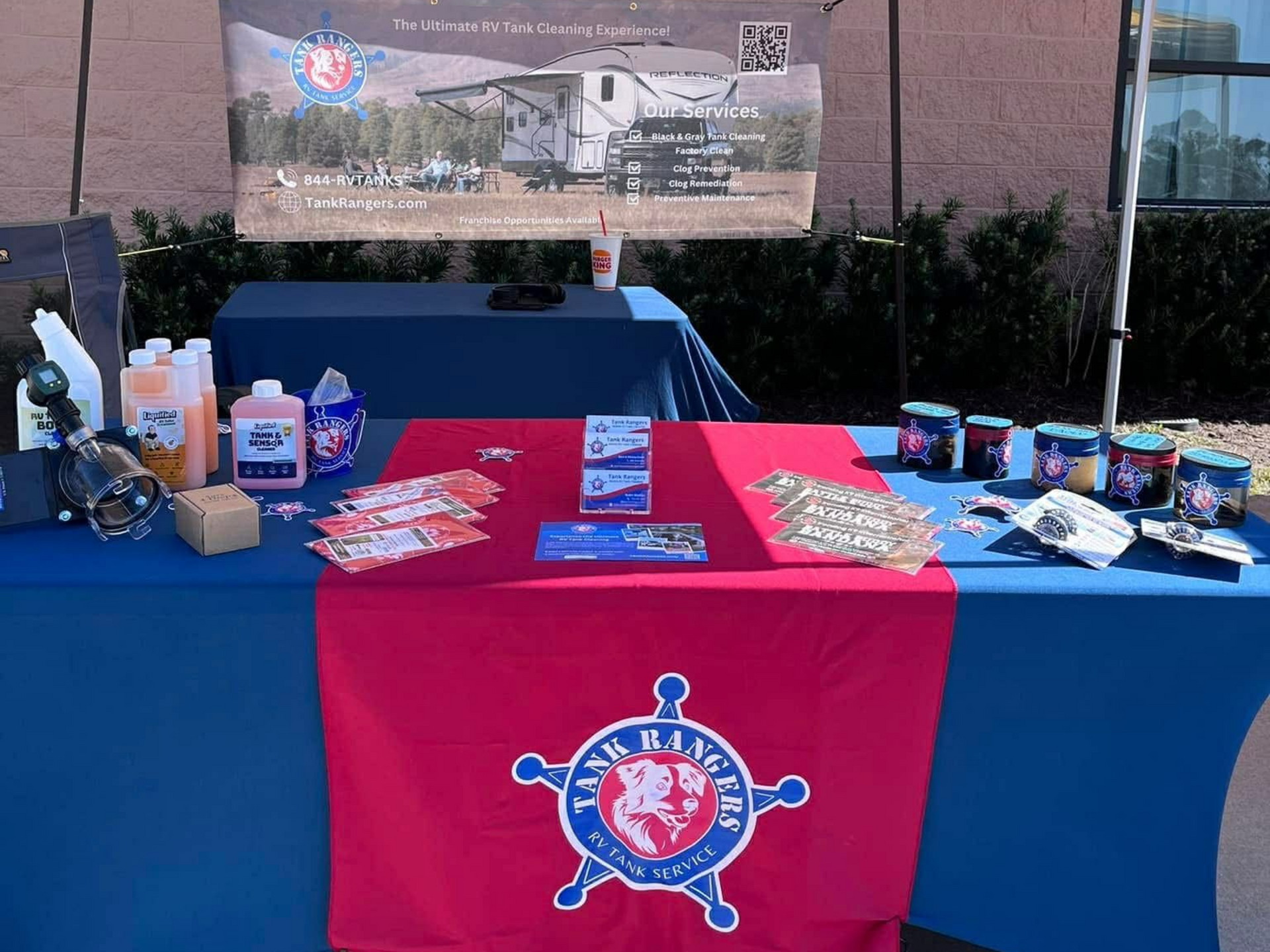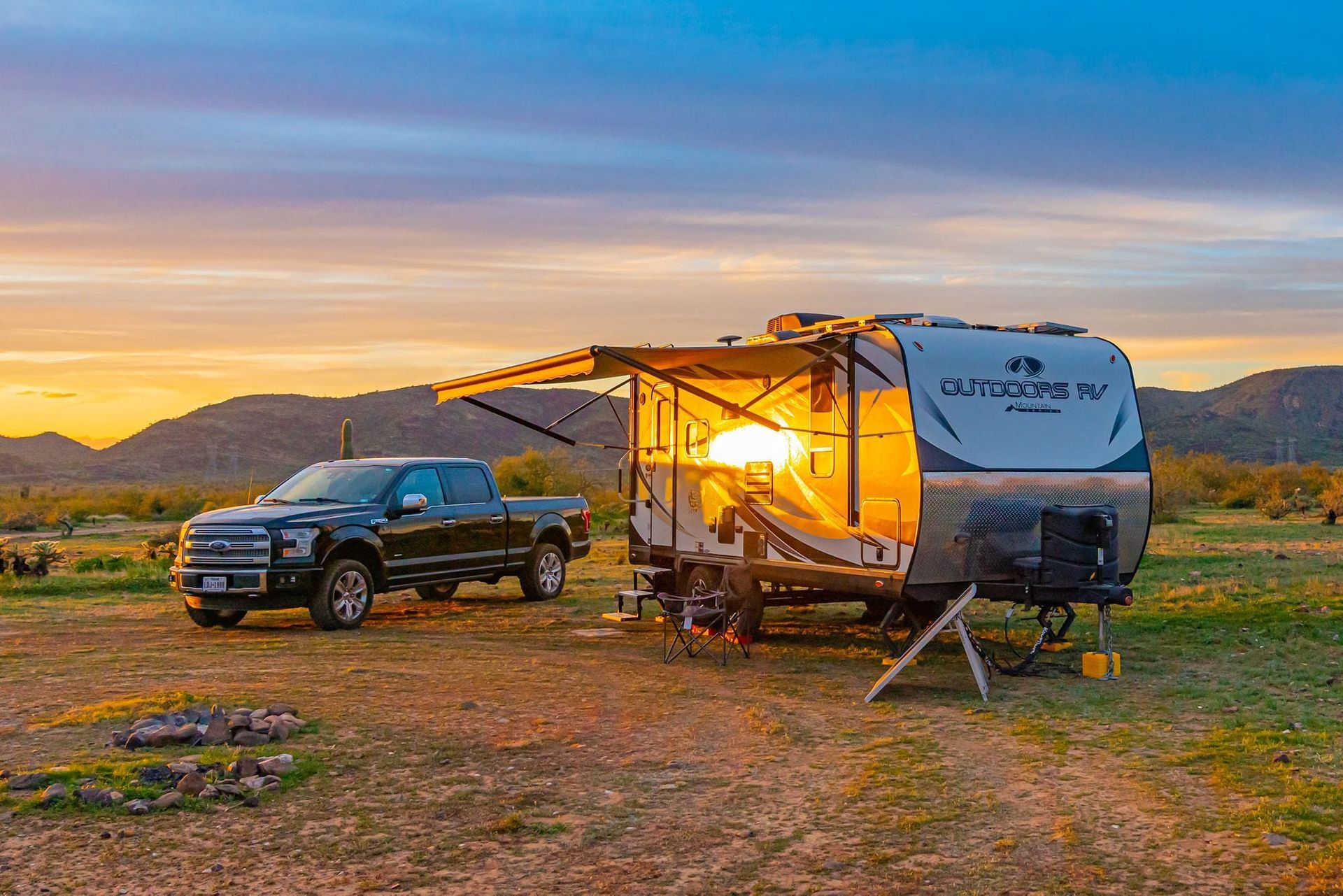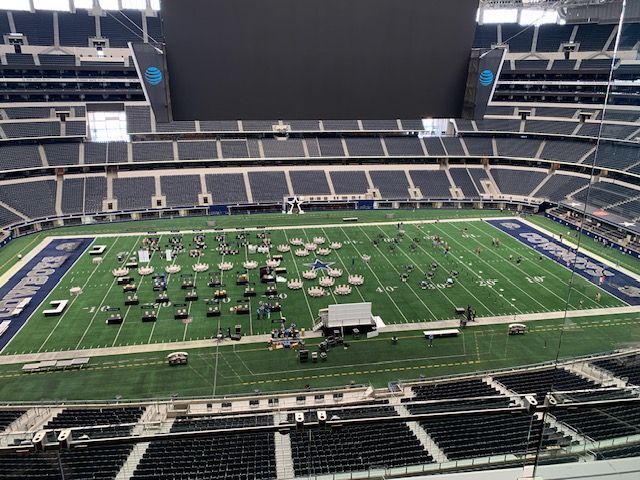The Real Cost of Full-Time RV Life in 2025
Jennifer+ Aggio • September 19, 2025
One of the first questions I hear when people start dreaming about full-time RV life is, “How much does it cost?” Is it affordable? Can I really do it? Some expect you to hand over your exact budget and think it’s the same across the board, but the truth is—there are SO MANY variables.
Many people assume RV life is always cheaper than a house, but the reality is more complex. The good news is it can be as affordable or as expensive as you make it. Your lifestyle choices, travel style, and even where you park all play a role. In this post, we’ll break down the real costs of full-time RVing, the hidden expenses that catch people off guard, and tips for keeping your budget under control.
Fixed Essentials Every Full-Timer Faces
Understanding RV Loans: The Reality Behind the Payments
Whether you buy new or used, your RV is a depreciating asset. Some RV payments can be as high as a mortgage, so it’s important to be realistic. Do your own budget and buy within your means. Don’t let the dream of RV life push you into debt that overshadows the freedom you’re chasing.
Current RV Loan Rates & Terms (2025)
Here are some facts (from September 2025):
- For borrowers with
excellent credit, RV loan interest rates can be as low as
~ 5.99% APR.
LendingTree - If credit is less than excellent (good, fair, poor), rates go up: maybe into the double digits.
LendingTree | My Financing USA - Terms vary a lot. Some loans are 5-7 years (60-84 months), but for larger or more expensive rigs, or for buyers needing lower payments, you’ll see terms up to
15-20 years (180-240 months).
Trident Funding | Bankrate | LendingTree - Also, RV loans are considered “luxury/recreational” in many cases, so lenders often require stricter credit, higher down payments (sometimes 10-20%), etc.
Navy Federal Credit Union | valleycu.org
What It Means: How Much More You Really Pay
To illustrate the real cost, let’s run a few scenarios. These are approximate, but they help show why loans can double the amount you pay for an RV if you stretch the term long enough.

So for example:
- In the frugal term (10 yrs at ~6.5%), you pay about $18-20k in interest over the life of the loan.
- In the longer-term version (20 yrs at ~9%), you more than double what you borrowed, paying ~$105k vs $50k up front.
- With a high rate + long term, you could end up paying nearly
three times what you borrowed by the time everything is done.
Key Takeaways
If you have the disposable income to buy without a loan, do it—especially if you’re on a fixed income. Paying cash cuts interest and early depreciation, but make sure you still have savings set aside for the unexpected. No monthly payment also means less stress when fuel spikes, a repair pops up, or work slows down. Freedom feels a lot better when your home-on-wheels is paid for.
If you do finance, shop hard for the lowest APR (credit unions are often your friend), keep the term as short as you can realistically afford, and run the real
out-the-door math: down payment, taxes, registration, dealer fees, warranties—everything. Long loans (15–20 years) make the payment look friendly but can double what you pay over time, and RVs depreciate quickly; getting upside-down is common. A small extra principal payment each month can cut years and thousands off the loan.
Bottom line
- Buy used, pay cash if you are able.
- If you buy new, make sure you can afford it
(the full end amount—not just the sticker price—including down payment, taxes, fees, interest, registration, and add-ons)
Fuel / Gas or Diesel

Fuel is the biggest swing item in most full-time budgets because it rises and falls with how much you move. When you’re rolling every few days, you’ll feel it fast; when you slow down and sit for a month, your costs calm down just as quickly.
For example, we’ve had months where fuel topped $1,000+—those were high-movement months with lots of miles. Then we’ve had quiet seasons where we stayed put and barely hit $300 for the whole month. Same family, same rigs—completely different budget outcome, all because of travel pace.
A real-world snapshot: we’re about to drive from South Dakota to Florida over roughly three weeks. We run two gas vehicles, and my estimate for that move is around $1,500 in fuel. That number isn’t magic; it’s just math plus a little buffer for price swings and side trips.
If you want your own quick estimate, use this simple method:
- Map the miles for the move.
- Know your MPG for each vehicle (your tow vehicle/motorhome when towing vs. your daily driver if you’re caravaning).
- Miles ÷ MPG = Gallons needed (do this for each vehicle).
- Gallons × average price = Fuel cost (add a buffer for detours, headwinds, mountains, and traffic).
Example (purely illustrative):
- Rig: 1,800 miles ÷ 8 MPG ≈ 225 gallons
- Second vehicle: 1,800 miles ÷ 22 MPG ≈ 82 gallons
- If gas averages $3.75/gal → (225 + 82) × $3.75 ≈ $1,153 (then add a cushion for detours, idling, or price spikes)
A few levers can nudge fuel down without killing the fun: slow your roll (fewer move days), favor monthly stays and do day trips from a basecamp, keep tires properly inflated, travel lighter, aim for 60–65 mph instead of speeding, and watch wind and elevation when you plan routes. Gas vs. diesel can matter too, diesel rigs often get better MPG but fuel may cost more and you’ll have DEF and different maintenance; the biggest driver (pun intended) is still how often you move.
Bottom line: expect fuel to
yo-yo with your travel style. Plan big repositioning moves into your monthly budget, use a quick estimate before you go, and balance high-movement stretches with “park-and-explore” months to smooth out the spend.
Bottom line
Expect fuel to yo-yo with your travel style. Plan big repositioning moves into your monthly budget, use a quick estimate before you go, and balance high-movement stretches with “park-and-explore” months to smooth out the spend.
Campgrounds & Sneaky Fees
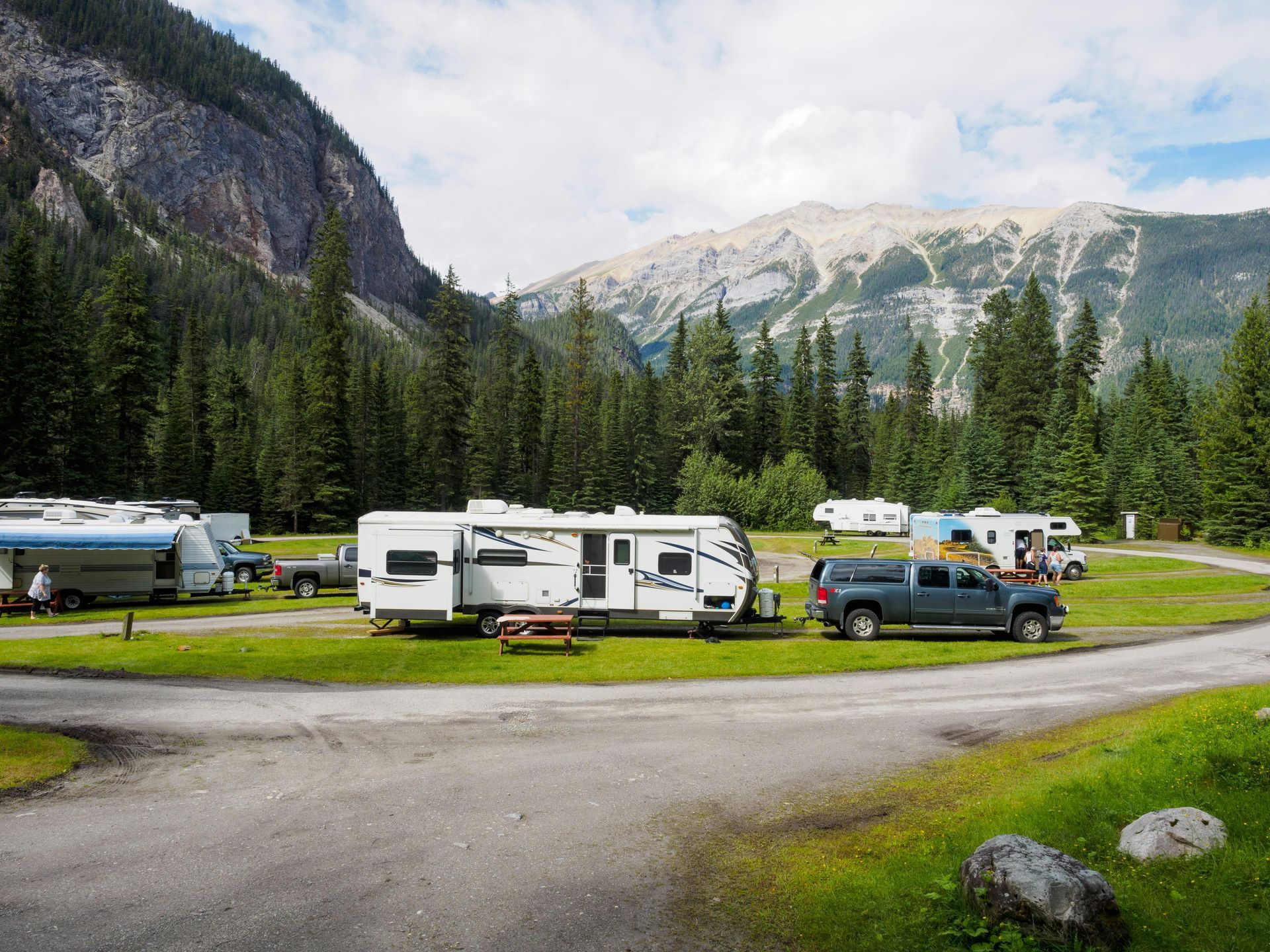
Campground pricing swings wildly—from $20 at county parks to $150+ at RV resort sites—and the fine print is where your budget lives or dies.
Monthly rates often look like a steal, but many parks charge “plus electric.” We’ve personally paid as much as $300+ and as little as $5 for a month. That range comes down to two things: the park’s kWh rate and how much power you actually use. Before you commit to a monthly site, ask how electricity is billed (metered vs flat), the exact rate and any minimums/fees, and whether you can photograph the meter at check-in and check-out. Then look at your habits: if you’re running several A/Cs, a residential fridge, and electric heat, expect a bigger bill; if you can switch some loads to propane, park in shade, and be intentional about what runs at the same time, you can keep metered costs in check.
On nightly and weekly stays, you’ll often see electricity included, which is where memberships can tilt the math in your favor. Programs like Thousand Trails (and add-ons) can crush your per-night cost if you plan routes within their network; Escapees, KOA Rewards, Passport America, FRVA, RV Overnights, and Harvest Hosts/Boondockers Welcome each fit different travel styles and regions. A quick way to judge any membership: divide the annual fee by your average savings per stay to get the break-even nights. If you’ll meet or exceed that number, it probably pays for itself—sometimes in just a few stops—and, as a bonus, many of those nights include power, which helps avoid surprise metered bills during high-draw seasons.
Then there’s the nickel-and-dime factor. Resorts and peak-season destinations may tack on per-pet fees, per-child fees (many families call this the “child tax”), extra-vehicle charges, resort/amenity fees, site selection fees, wristbands for activities, and holiday surcharges. Monthly stays can also layer admin/hookup fees on top of metered electric, while short stays might charge for early check-in or late check-out. It’s not unusual for a “$65/night” site to climb to $90–$110 once you add pets, kids, a second vehicle, taxes, and resort fees. The antidote is simple: shop the out-the-door total, not the headline rate. When you call or book, price it for your party (adults, kids, pets), vehicles, dates, and the exact site type you want, and get the electricity policy (and kWh rate) in writing.
Bottom line
Monthly rates can be amazing, but always pencil in electricity; memberships can slash nightly costs if they match your route and pace; and small add-ons add up fast. Price the
real total before you book, conserve where it makes sense, and use memberships strategically to keep both your campsite and your power bill under control.
Insurance

Full-time RV insurance is non-negotiable—it costs more than recreational coverage, but it’s the only way you’re truly protected. Skipping it can leave you uncovered if something happens. Don’t risk it. The only two companies I know that offer true full-timers insurance is progressive and geico. The cost of insurance will depend on which state you reside or domicile in, and then what kind of coverage do you get.
You’ll also want to factor in
health insurance as a nomad.
Check out Dealora Snyder’s blog for some great insights on this topic.
Groceries and Daily Living

Groceries often cost about the same as house life, but the experience is different. RV pantries and fridges can be smaller, which means more frequent shopping trips. Costs can also fluctuate by region—organic produce in California is going to hit your wallet harder than small-town markets in the Midwest. And if you have specific dietary needs, prepare to start over every time you move, finding new stores and local hot spots for your staples.
Additional Costs to Keep in Mind
Maintenance & Repairs: The Costs Most People Underestimate
This is where budgets get blindsided. RVs are rolling houses that shake at highway speeds, live outdoors in sun/rain/salt, and depend on a web of systems (electrical, plumbing, HVAC, slides, suspension). Regular upkeep is
ongoing—and skipping it usually turns small jobs into big, expensive ones.
What “routine” actually looks like (motorized + towables):
- Oil and filters on engines and generators
- Transmission and axle fluids
- Brake inspections
- Trailer bearing repacks
- Brake adjustments
- Tire rotations/pressure/TPMS checks
- Sealant inspections and touch-ups (roof, windows, corners, penetrations)
- Slide seals cleaning/conditioning
- Water heater maintenance (flushes, anode rod if applicable)
- A/C coil cleaning and gasket checks
- Furnace and fridge service
- Roof and body wash/wax to protect finishes
- Battery tests (house + chassis), water (for flooded batteries), and terminal cleaning
- Alignment/suspension checks after hard miles
- and I'm sure theres more that I forgot...
Consumables & lifecycles (ballpark reality):
- Tires age out by years, not tread—many rigs replace at ~5–7 years. Sets can run from “not too bad” on small trailers to “gulp” on big motorhomes. Budget for it now so it’s not a crisis later.
- Batteries (house/chassis) have finite cycles; plan on eventual replacement whether you’re on lead-acid or lithium.
- Roof care is perpetual: caulking/inspecting quarterly-ish and addressing any cracks now prevents water intrusion, mold, and interior damage. Something like RV Roofing Solutions is highly recommended sometimes it is about prevention—it can head off major repairs, help your rig run cooler (lowering A/C load), and keep maintenance simple over the long haul.
- A/Cs, water pumps, converters/inverters, slide motors/cables, leveling systems—they’re all wear items. Most aren’t catastrophic alone, but two or three in a season without a cushion hurts.
DIY vs. mobile tech/shop:
A lot is DIY with the right sealant, tools, and time. But expect professional labor to be a
significant line item—mobile RV techs and shops are often well over $100/hour in many markets, and busy seasons can mean wait times. Doing small inspections monthly (open the wet bay, peek at the roof, listen for odd noises, look for dust trails at slide corners) catches problems early and keeps you out of emergency pricing.
How To Budget Without Guessing
- Create a maintenance sinking fund you add to every month. For many full-timers, setting aside $150–$300/month for towables and $250–$500/month for motorized covers routine service and small parts—separate from fuel and campsite costs. Bigger/older rigs or heavy travel? Aim higher.
- Keep a repair cushion for the “when, not if” events. A practical target is enough to cover one major item (e.g., a full set of tires, a major suspension repair, or a big appliance replacement).
- Track your intervals (miles, hours, months). A simple spreadsheet or notes app beats memory—especially with generator hours and seasonal items like bearing repacks.
- Stock a small maintenance kit: roof sealant compatible with your roof type, butyl tape, fuses, spare water pump, anode rod, water filters, Dicor/Lap sealants, silicone for appropriate areas, spare hose gaskets, a multimeter, and basic hand tools.
The honest truth: something will break. Planning for it—financially and mentally—turns a road-stopping emergency into a fix-it-and-roll-on moment. Proactive maintenance (especially roof, tires, and seals) and a steady monthly set-aside are what keep your adventures on schedule and your budget predictable.
Internet & Connectivity
For many full-timers, internet is a lifeline. The easiest way to think about it: match your setup to how critical being online is for you. If you only browse and stream occasionally, a single strong cellular plan may be enough. If you work or school from the road, consider redundancy—e.g., Starlink plus a mobile hotspot (or two hotspots on different carriers). That way, if one option is slow or blocked by trees/tower congestion, the other keeps you connected.
Quick checklist:
- Decide how critical uptime is (casual → single plan; must-be-online → Starlink + hotspot or dual carriers).
- Know your typical data use so you don’t blow through caps.
- If you boondock, remember Starlink uses power, budget for it.
- Always have a fallback spot (café, library, coworking) on big work days.
Want a deeper dive with real setups, tips, and gotchas?
Read this!
Saving Money While Traveling
Boondocking + Solar: when does it pay for itself?
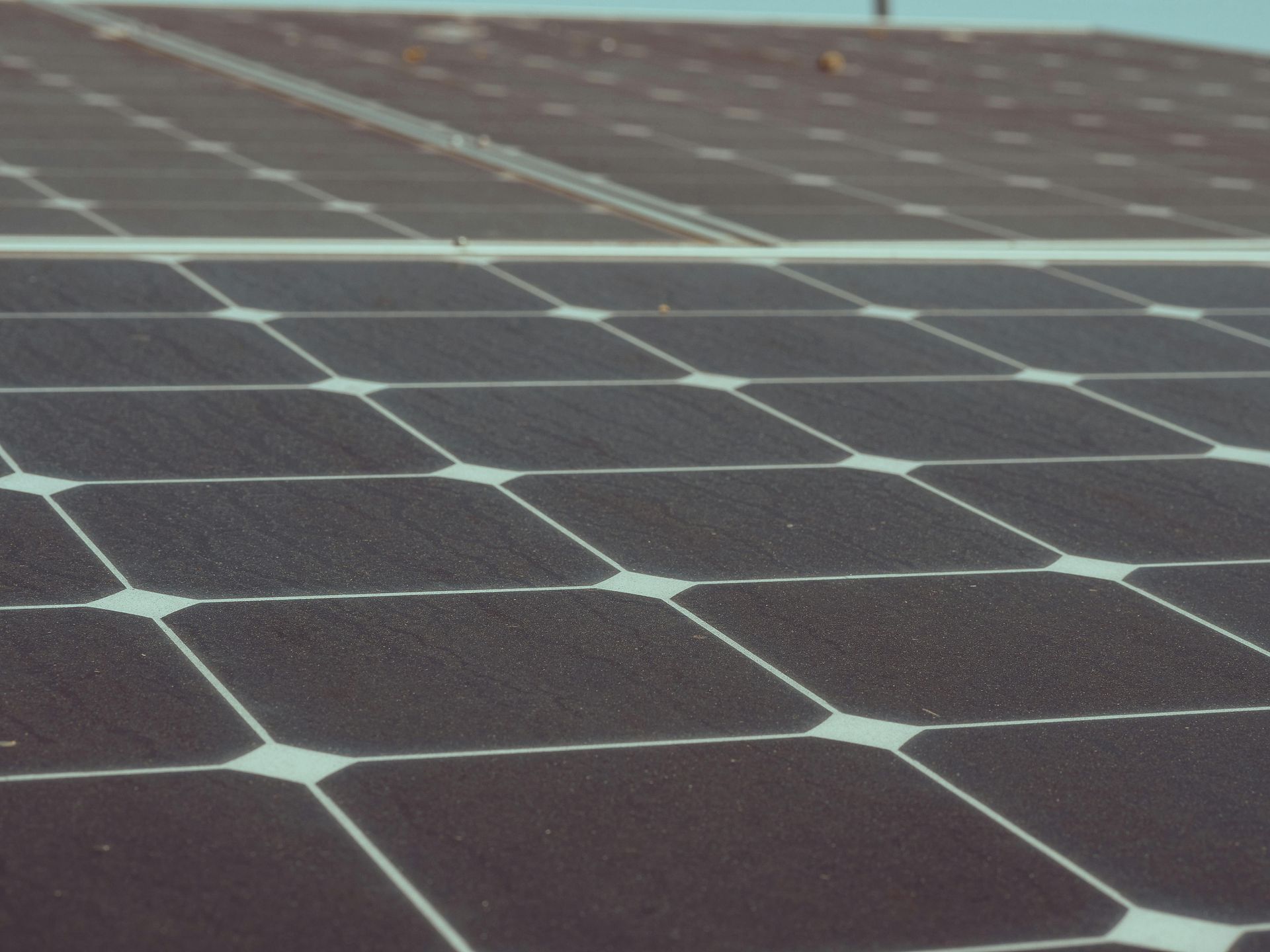
Free camping on public land can slash your lodging costs—but to do it comfortably (and repeatedly), you’ll want enough battery/solar to run your essentials. Solar is
upfront expensive but can pay for itself if you boondock often.
How to think about ROI (payback):
- Average nightly savings ≈ (what you would’ve paid for a site) – (boondock costs)
Boondock costs might include dump/fill every few days ($10–$20), a little extra propane, and generator fuel if you need it. - Payback nights ≈ (solar system cost) ÷ (average nightly savings)
Quick examples (ballpark):
- Small system ($1,200) — lets you run lights, devices, fans, charge laptops, and sip power for a day or two.
If you replace a $40/night park stay with boondocking whose net costs are ~$5/night (dump/propane), savings ≈ $35/night → payback ≈ 34 nights of boondocking. - Mid system ($3,500) — ~600–800W solar + 200–300Ah + 2kW inverter (DIY pricing).
Same $35/night savings → payback ≈ 100 nights. At 10 boondock nights/month, that’s ~10 months to break even. - Big system ($7,500) — 1,200–1,600W solar + 400–600Ah + hybrid inverter (DIY/pro mix).
If you average 15–20 boondock nights/month with similar savings, payback is ~11–14 months. If you mostly stay in monthly parks, payback stretches.
Generator Only Comparison:
If your generator burns ~0.5 gal/hr and you run it ~3 hrs/day at $3.75/gal, that’s
~$5.60/day. Solar that cuts most of those hours saves
~$170/month if you boondock 30 days—meaning a $3,500 system “pays back” in ~20 months just on fuel, faster when you count site fees avoided.
Reality Check
ROI only works if you actually boondock. If your route is mostly shaded forests, resorts, or winter clouds, solar pays back more slowly. But even then, solar buys silence, fewer generator hours, and access to places with generator restrictions.
Camphosting / Workamping: trade time for a paid-for site
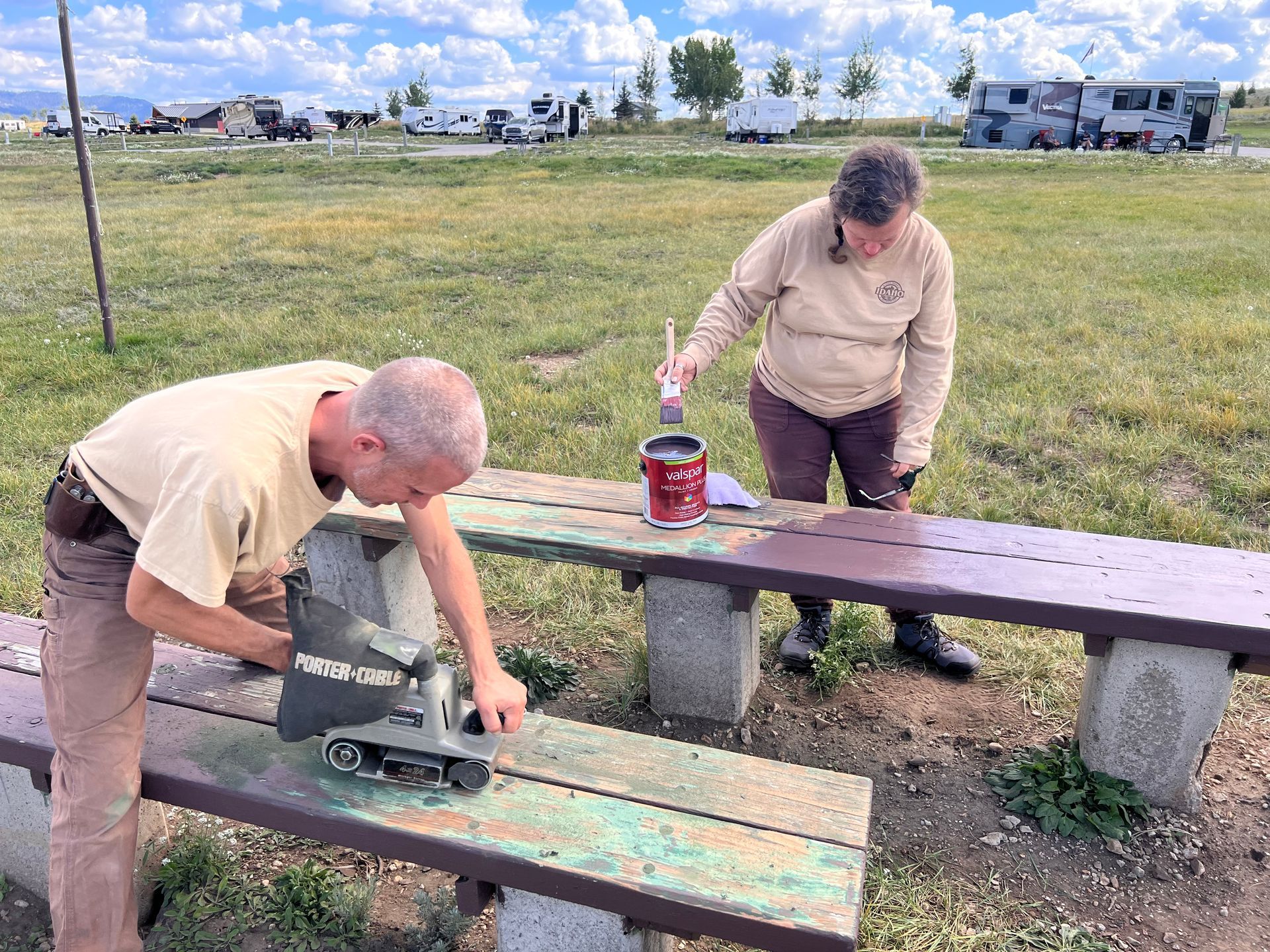
These gigs can cover your site + utilities (often $600–$1,200 value/month depending on region) and sometimes include a stipend. Typical expectations are 15–25 hours/week per site (varies). If your site is worth $900 and you contribute ~80 hours/month, your effective value is about $11.25/hour—more with a stipend. It’s not “free,” but it’s a great swap if you enjoy the work and want to anchor in one place for a season.
Pro Tip: Confirm what’s included (electric? laundry? propane discounts?), exact hours, season length, and duties. State and county parks can be wonderful, but they often book
months in advance.
Be Flexible with Location
Prices spike near national parks, beaches, and big events. Shifting
20–40 minutes farther out can cut rates dramatically—and you’ll often get
roomier sites and fewer add-on fees. Shoulder seasons (spring/fall) and
midweek stays also help. If you’re booking monthly,
call; many parks have unpublished long-stay deals.
Travel Smart: Slow Your Roll
Fewer move days = less fuel and more chances to snag
weekly/monthly rates. Cluster your travel by
region (e.g., a few months in the Southwest) to avoid pricey cross-country hops. Choose states and towns with a
lower cost of living for longer pauses—and use those months to rebuild the budget cushion.
Quick List
- Swap a couple of resort weeks for boondock weeks each month → hundreds saved.
- Use memberships (Thousand Trails, Escapees, Passport America, FRVA, KOA Rewards, Harvest Hosts/BW) where they fit your route to lower per-night costs.
- In metered parks, switch water heater/space heat to propane when practical and be intentional with high-draw appliances.
- If connectivity is critical, plan
basecamps near decent cell/Starlink windows so you can stay longer and spend less.
Bottom line: The big levers are where you stay, how often you move, and how you power your life. Dial those three to your lifestyle, and the savings will follow.
Reprioritizing Your Budget Compared to House Life (the mindset + the math)
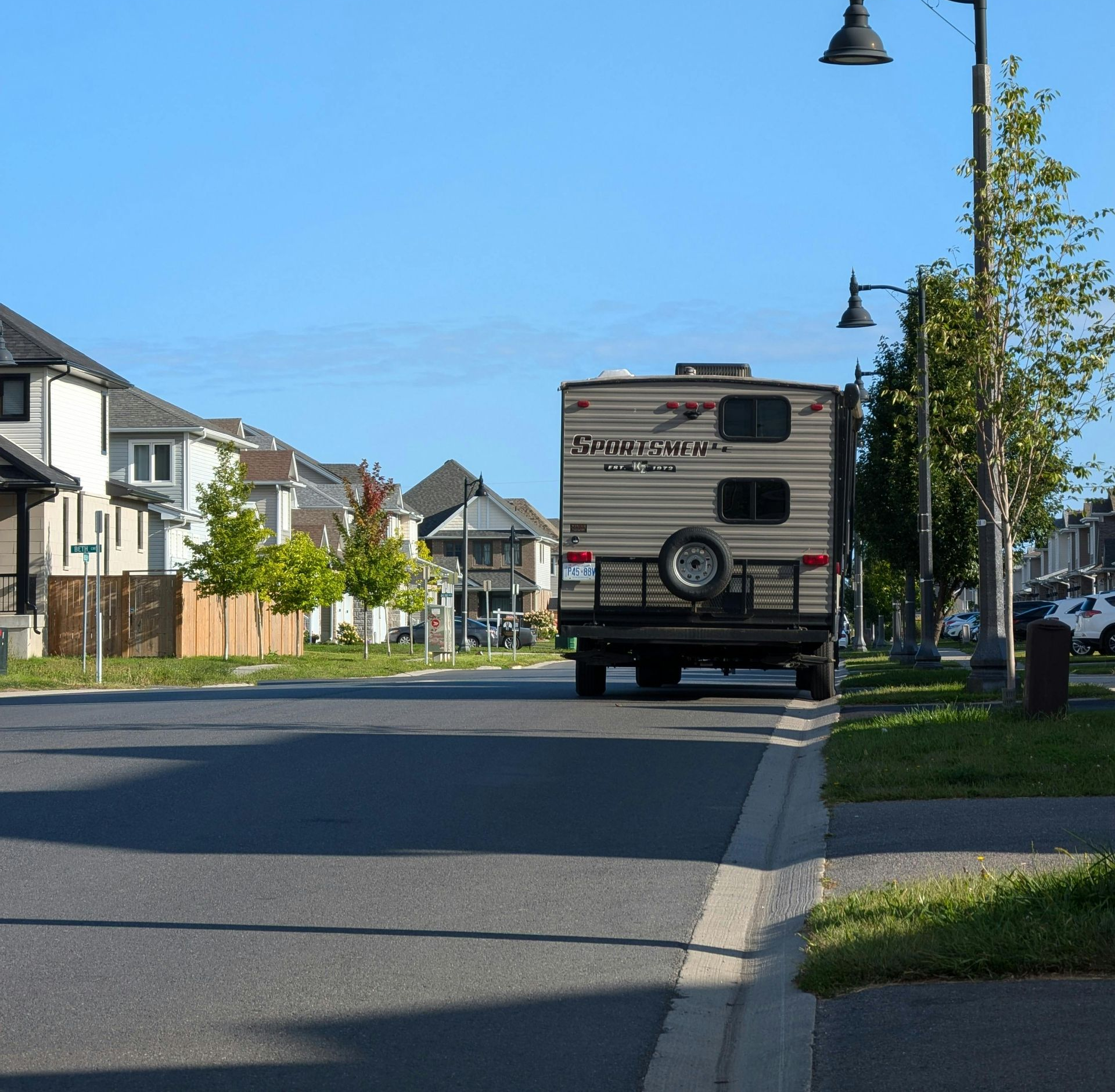
Switching from a sticks-and-bricks home to a rolling home isn’t just a change of address—it’s a job change for your finances. In a house, the budget’s biggest job is paying for square footage (mortgage or rent, property taxes, utilities, lawn care, HOA). In an RV, that money’s job shifts to mobility and maintenance: campsites, fuel, insurance that fits full-time use, connectivity, and a steady sinking fund for wear-and-tear.
Housing costs morph first. Your “mortgage” becomes your RV loan, campground stays plus the choices that influence them: travel pace, location, and season. Stay near national parks or beaches in peak season and you’ll pay resort prices; slide 30–40 minutes out or travel in shoulder months and the same budget stretches.
Monthly sites can be a win but often add metered electric, so your utility line becomes variable. Add propane for water heat and space heat, plus laundry (in-park machines or laundromats), dump/fill fees if you boondock, and data/internet—which often replaces the home cable bill.
Insurance and admin change shape, too. Full-timer RV insurance stands in for homeowners/renters coverage and must match your actual use so you’re truly covered.
Property tax disappears, but you’ll have a mail-forwarding service, and a chosen domicile (which can affect premiums and taxes). Learn more about that here. None of these are huge alone, but together they’re the “paperwork line” you rarely think about in a traditional home.
Stuff gets rebalanced. You’ll buy less décor and storage bins—but you’ll buy gear that protects the rig or expands your range (surge protector, hoses/filters, sealants, TPMS, maybe solar/batteries). Read up on necessities new RVers need. Many new full-timers keep a small storage unit for heirlooms or seasonal items; others sell it all and pocket the monthly savings. Either way, be honest about the one-time outfitting costs in year one, then expect the curve to smooth.
The biggest philosophical shift is planning for the “when, not if” expenses. Houses break; RVs break while being shaken like a paint mixer. That’s why an ongoing maintenance sinking fund becomes a core bill, not an afterthought—money you move every month so tires, batteries, roof work, and surprise repairs don’t wreck your trip. (As a reminder: we like a recurring set-aside in the ballpark of $150–$300/month for towables and $250–$500/month for motorized, adjusting for rig size, age, and miles.)
Finally, give your budget permission to buy experiences. In an RV, your backyard changes every time you move—that’s the point. Trade a little “stuff” for park fees, tours, kids’ programs, bikes, kayaks, or museum passes. If you’re on a fixed income, you can still prioritize the fun by slowing your pace, booking monthly stays, leveraging memberships that truly fit your route, and choosing regions with a lower cost of living for longer pauses.
The goal isn’t to spend nothing—it’s to spend
on purpose.
Bottom line: in house life your money pays for space; in RV life it pays for place. Once you reassign your dollars—stays over square footage, maintenance over remodeling, connectivity over cable, fuel only when it serves the plan—you’ll find a budget that supports the lifestyle instead of fighting it.
The Priceless Side of RV Life
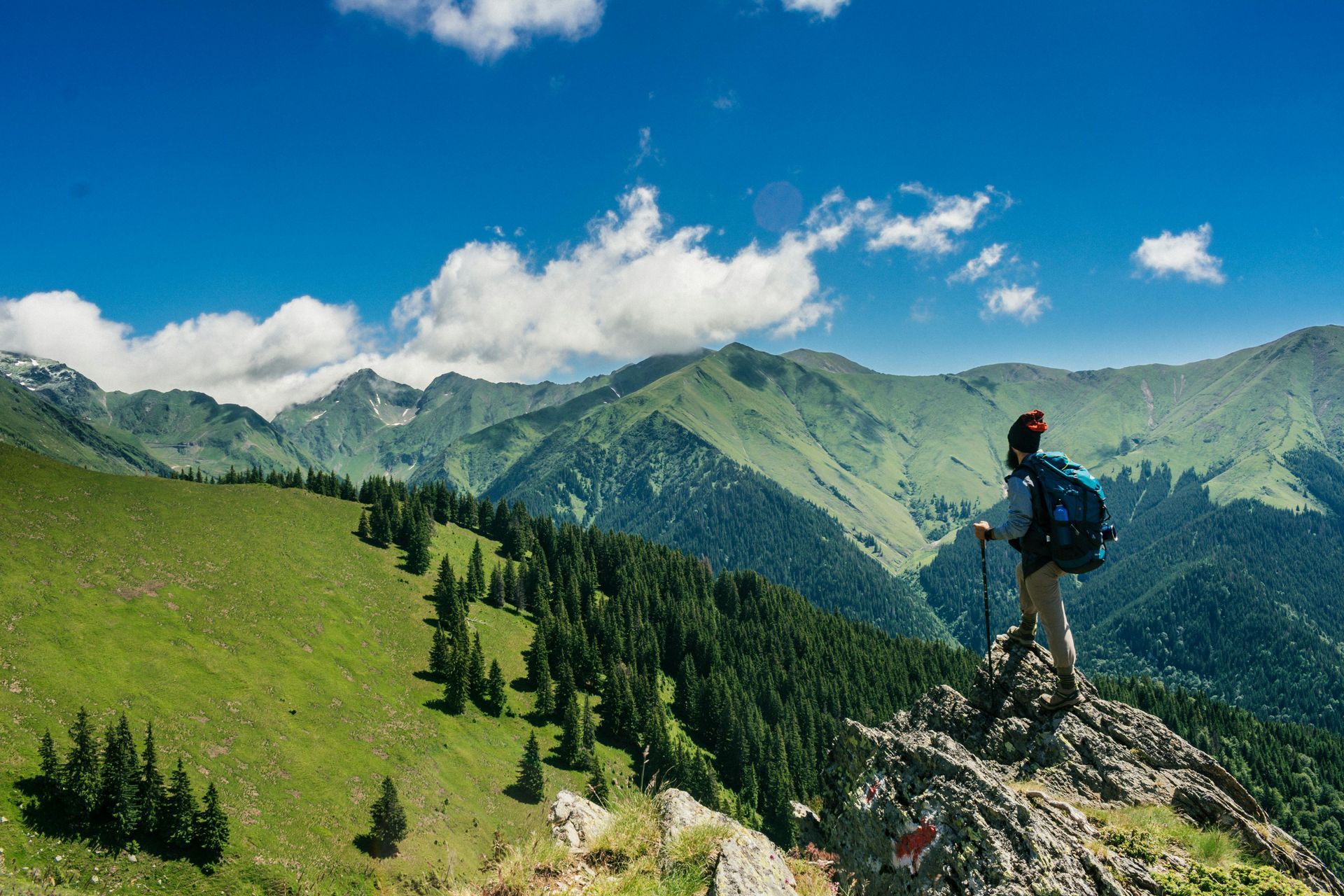
You can spreadsheet the costs all day long, but the reason most of us keep rolling isn’t numbers—it’s what the numbers buy. RV life trades square footage for stories. It buys you sunrise trailheads without a commute, lazy campfire nights where conversations go longer than screen time, and detours that turn into family legends. Our kids don’t remember the receipt totals; they remember spotting elk at dusk, collecting junior ranger badges, and that one storm where we played cards by headlamp and laughed till our sides hurt.
Health sneaks in, too. Living closer to the outdoors nudges you to walk more, breathe deeper, and let weather set the rhythm instead of a calendar reminder. Even on work-heavy weeks, you can step outside to reset—ten minutes under big sky does more than a pricey wellness app. Stress shifts when your view does; swapping clutter for miles tends to clear mental space you didn’t know you needed.
Then there’s community, the secret superpower of this life. Camp neighbors become instant friends when someone needs a tool, a ladder hold, or a cup of sugar. Online groups turn into real-world potlucks, caravan buddies, and safety nets. When a water pump fails, someone nearby has done that repair. When a kid has a birthday on the road, three rigs show up with cupcakes. It’s not just social; it’s support.
Freedom might be the biggest non-financial dividend. You get to choose your weather, your pace, and your priorities. Stay another week because the fishing is good. Leave tomorrow because your gut says go. Park near grandparents for a month, then slide south when the first frost hits. RV life gives you a dial to turn—toward connection, toward nature, toward whatever your family needs right now.
And if you roadschool or travel with kids, learning stops being a worksheet and becomes your daily backdrop. History is a battlefield you walk, geology is a canyon you climb, and responsibility is earned through camp chores and travel-day teamwork. The practical skills (problem-solving, flexibility, resilience) are as valuable as anything in a textbook.
None of this shows up on a budget line, but it’s what the budget is
for. Tight months and careful choices feel worth it when you watch your people light up over a view, a trail, a shared meal, or a new friend. Build your numbers to protect these moments—slow down when you need to, say yes to the experiences that matter, and let the rest be optional. In the end, RV life’s best returns aren’t measured in dollars; they’re measured in the stories you’ll tell for years.
Final Thoughts
The cost of full-time RV life in 2025 varies widely—a solo traveler in a van may spend under $1,500 a month, while a family in a big rig could spend $6,000 or more. There’s no one-size-fits-all budget.
The key is planning. Know your budget, buy your RV within your means, and make sure you’re building savings each month for the inevitable repairs and surprises.
RV life can be exciting and freeing, but too many people launch into it in “vacation mode,” spending beyond their means. That’s not sustainable. Be smart, find your rhythm, and embrace the community and lifestyle you’ve been dreaming about.

Other blogs you might like...
